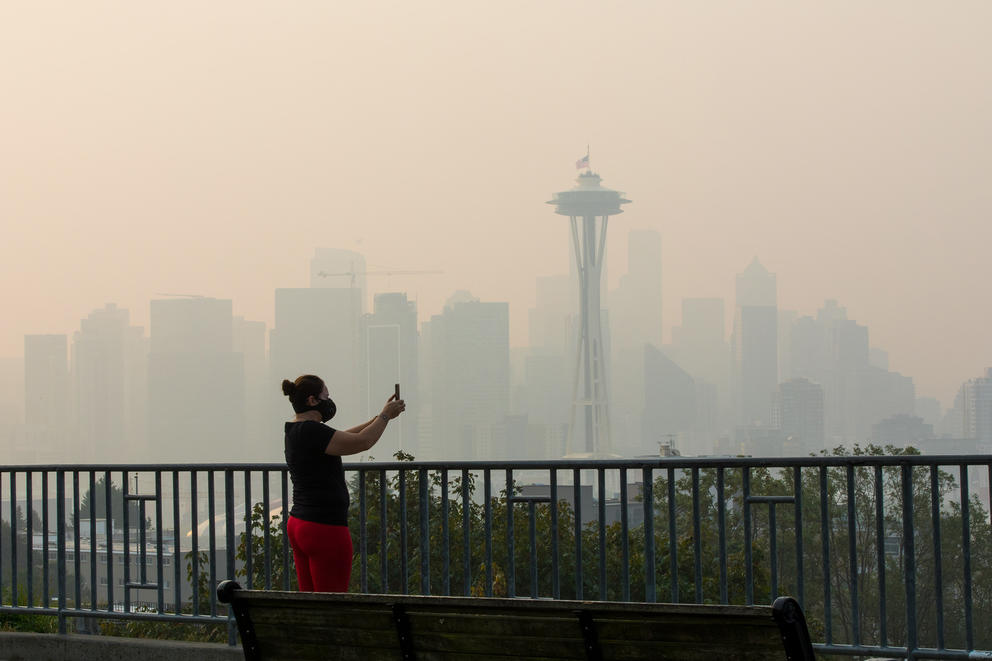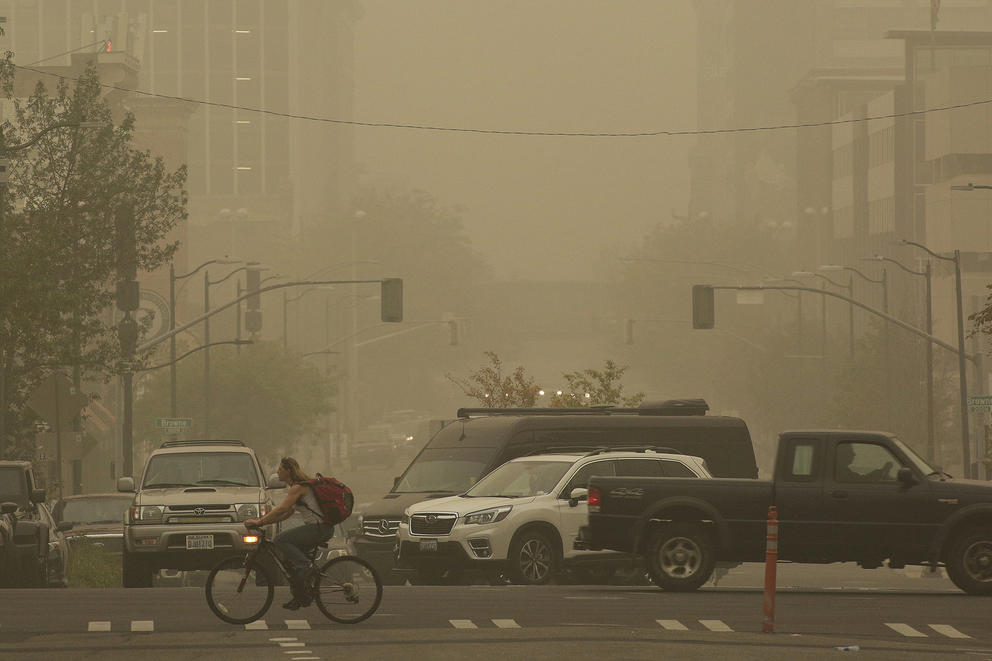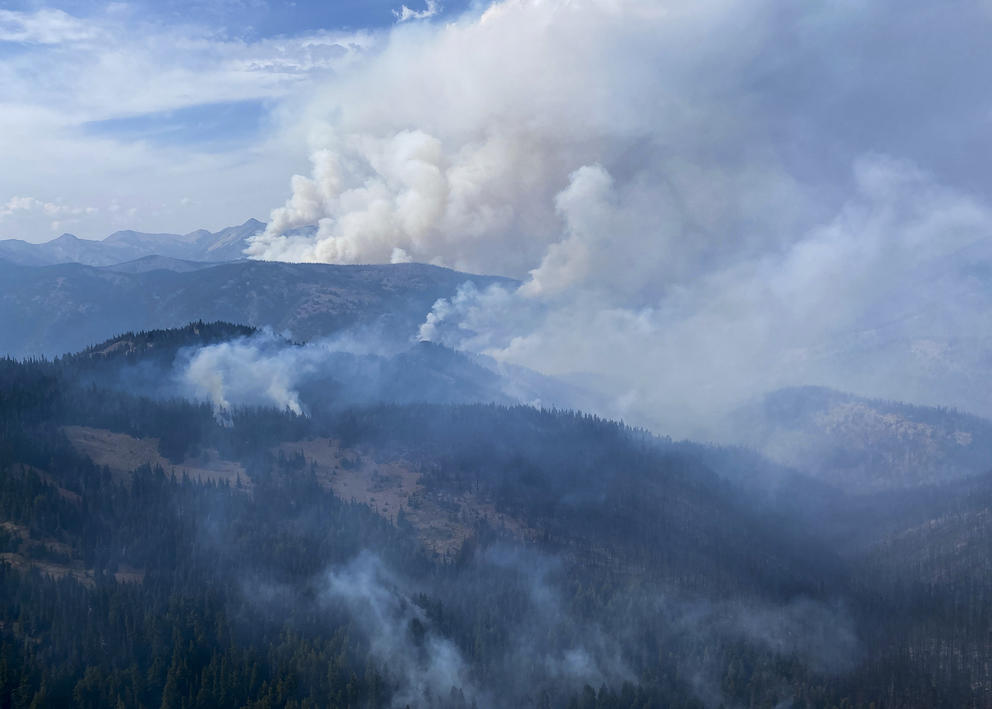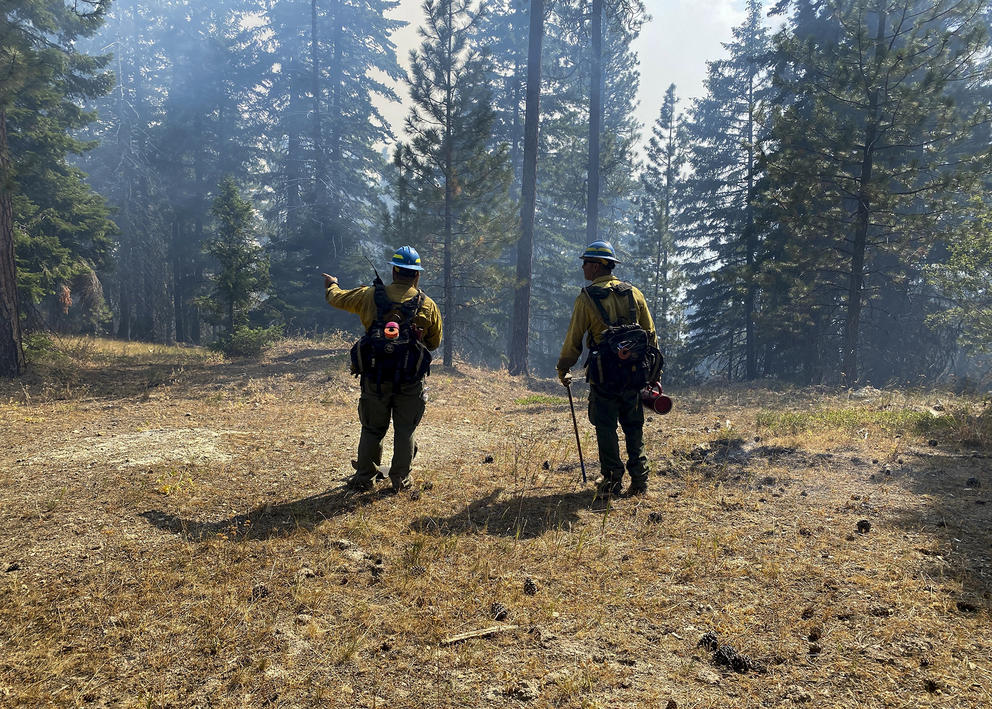“It's really adding to current research that's showing that Pacific Northwest fires are becoming more important for air quality in North America,” Buchholz said.
Buchholz and her team used satellite imagery to track carbon monoxide, a common compound released during wildfires. Using those readings alongside other pollution measures, the researchers determined that pollutants from wildfires were originating in the Northwest and traveling all across North America.
These new readings show a never-before-seen peak in pollution in August, which Buchholz says may point to a reversal of recent gains in air quality.
Humans have been reducing carbon monoxide emitted from other sources, like the tailpipes of cars, Buchholz said. On a global scale, the yearly trend of emissions is on the decline.
“Everywhere else in the world in August, [carbon monoxide] is generally going down,” Buchholz said. “But the Pacific Northwest’s trend is increasing.”
InvestigateWest (invw.org) is a news nonprofit dedicated to investigative journalism in the Pacific Northwest. Visit invw.org/newsletters to sign up for weekly updates.
Before 2012, research showed the region’s atmosphere was self-regulating and would show a typical dip in pollutants at the end of the summer. But the new August peak in carbon monoxide reflects the region’s burning season, and the timeframe highlighted by the study — 2012 to 2018 — coincides with when wildfires in the Northwest started becoming more intense.
While Buchholz agreed that more research needs to be done to properly assess the health impacts of a new peak in air pollution, a pilot study by researchers from the same center showed that Colorado may already be among the afflicted.
The study showed Colorado had a significant increase in respiratory death rates in August during the same six-year period, which correlates to increasing forest fires in the Pacific Northwest — and not in Colorado.
Smoke from wildfires in Washington, Oregon and California obscures downtown Spokane, Wash., as shown at the corner of N. Division St. and Main Ave., as photographed from N. Pine St. and E. Main Ave., Saturday, Sept. 12, 2020. The smoke resulted in hazardous air quality in the area per the Spokane Regional Clean Air Agency. (Young Kwak)
For Rachel Baker, the forest program director at the Washington Environmental Council, the study’s new findings aren’t all that surprising.
“Given what we have seen in the news, and the dynamics we've seen in the last few wildfire seasons, it didn’t come as a surprise to know that the impacts are this far reaching,” Baker said.
Still, the study’s implications may help the council’s community program manager, Katie Fields, coordinate efforts to inform at-risk communities and secure funding for better forest management.
“Having that concrete information that we can point to really helps to be able to tell a compelling story about why it's important to have policy actions,” Fields said.
Last April, the Washington State Legislature approved a bipartisan bill that would provide $500 million over eight years to prevent and fight wildfires. President Joe Biden’s infrastructure bill also approved $3.3 billion to be used for wildfire management.
Fields said the bill identifies several “firesheds” or at-risk areas in Central Washington, where there’s a greater need for federal funding to mitigate wildfire risk.
“The infusion of money is definitely really beneficial. But it has to be ongoing and sustained,” Fields said.
Baker, a forester by training, stressed the greater responsibility she thinks that Washington has toward the rest of the country as a result of the study.
The Pacific Northwest, Baker said, has the potential to be a part of the climate solution. The forests in the region can store carbon and help mitigate climate change. Conversely, the region has a larger stake in proper forest management to ensure severe wildfires are reduced.
“It's a lot of responsibility and weight on our shoulders,” Baker said.
The front line
When it comes to wildfires and human health, Baker said, the biggest health risk is borne by those living in wildland-urban Interfaces, or areas where human habitat meets burn-prone green cover — whether those are forests, grasslands or other kinds of vegetation.
Communities living in these areas, typically on the outskirts of urban centers, tend to be inaccessible and difficult to warn against possible fires, Baker said. Not to mention that they live closer to the source of the fires in the first place.
“They're in areas where wildfires are more likely to occur. That could result in harm to property, to people,” Baker said.
Fields also said that inhabitants of these relatively inaccessible areas tend to be involved in jobs like agriculture that require them to be outside more frequently and more exposed to wildfire smoke.
In July last year, Washington state passed emergency fire and smoke rules to guarantee breaks, cool water and personal protective equipment for workers laboring in temperatures above 100 degrees. It joined Oregon and California as the third state to implement such a rule.
“You see greater exposure to wildfire risk and smoke inhalation risk for people who are working outdoors, whether that's working in forestry or whether that's working in farms,” Fields said.
Burning issue
Despite this new research linking wildfire to air quality, experts like Fields and Baker still advocate fighting fire with fire.
Intentional fires, a common strategy for improving forest health, can be a “challenging sell” to communities that live close to forested areas, Baker said. These prescribed fires involve intentionally burning areas of forest to reduce the fuel for more catastrophic fires down the line.
“In some places, there's not a lot of public acceptance of prescribed fire or maybe less understanding of the fact that it's important,” Baker said.
According to Baker, wildfires aren’t always a problem. They can often play an important role in regulating a forest’s ecosystems. Catastrophic and uncontrolled fires, however, have grown in frequency in recent years.
Baker maintained that prescribed fires are necessary in order to cultivate forests that are less susceptible to more dangerous wildfires.
“Wildfire is, in fact, a natural part of our ecosystems,” Baker said. “We just need to restore that balance.”
InvestigateWest (invw.org) is a news nonprofit dedicated to investigative journalism in the Pacific Northwest. Visit invw.org/newsletters to sign up for weekly updates.






